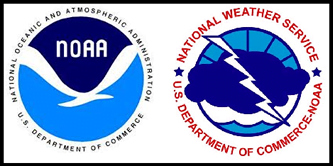RSS feed source: US National Weather Service
Date and TimeMag
DepthDistanceLocationDetailsMap Oct 27, 02:36 pm (GMT +7)
4.5
37 km19 km (12 mi) to the NW Java, Indonesia 2 reportsInfoOct 26, 08:20 am (GMT +7)
4.5
67 km55 km (34 mi) to the W Indian Ocean, 94 km southwest of Cilacap, Indonesia InfoOct 19, 01:53 pm (GMT +7)
4.9
52 km6 km (3.7 mi) to the N Indian Ocean, 62 km south of Cilacap, Indonesia 4 reportsInfoAug 29, 09:02 pm (GMT +7)
4.9
56 km37 km (23 mi) to the SW Indian Ocean, 98 km south of Cilacap, Indonesia 2 reportsInfoJun 21, 12:53 pm (GMT +7)
4.6
29 km89 km (55 mi) to the W Indian Ocean, 89 km south of Kawalu, Kota Tasikmalaya, Jawa Barat, Indonesia 2 reportsInfoNov 13, 2022 10:10 pm (GMT +7)
5.4
10 km86 km (54 mi) to the SW Indonesia: Di Laut 148 Km BaratDaya Cilacap 3 reportsInfoJun 29, 2019 01:47 pm (GMT +7)
5.2
73 km28 km (18 mi) to the SW Indian Ocean, 129 km south of Purwokerto, Indonesia 4 reportsInfoJun 21, 2019 05:27 pm (GMT +7)
5.2
61 km50 km (31 mi) to the SW Indian Ocean, 139 km south of Ciamis, Kabupaten Ciamis, Jawa Barat, Indonesia 7 reportsInfoJun 9, 2019 04:32 pm (GMT +7)
5.2
67 km24 km (15 mi) to the SW Java, Indonesia 28 reportsInfoNov 29, 2018 08:41 pm (Universal Time)
5.4
10 km95 km (59 mi) to the Enear Magnitude 5.4, Near of Semarang 9 reportsInfoAug 3, 2017 11:14 pm (GMT +7)
5.1
85 km13 km (8.3 mi) to the NW Indian Ocean, 53 km south of Pulau Jayakesuma Island, Indonesia 14 reportsInfoJan 3, 2017 04:02 am (GMT +7)
5.2
53 km75 km (47 mi) to the SW
Click this link to continue reading the article on the source website.


